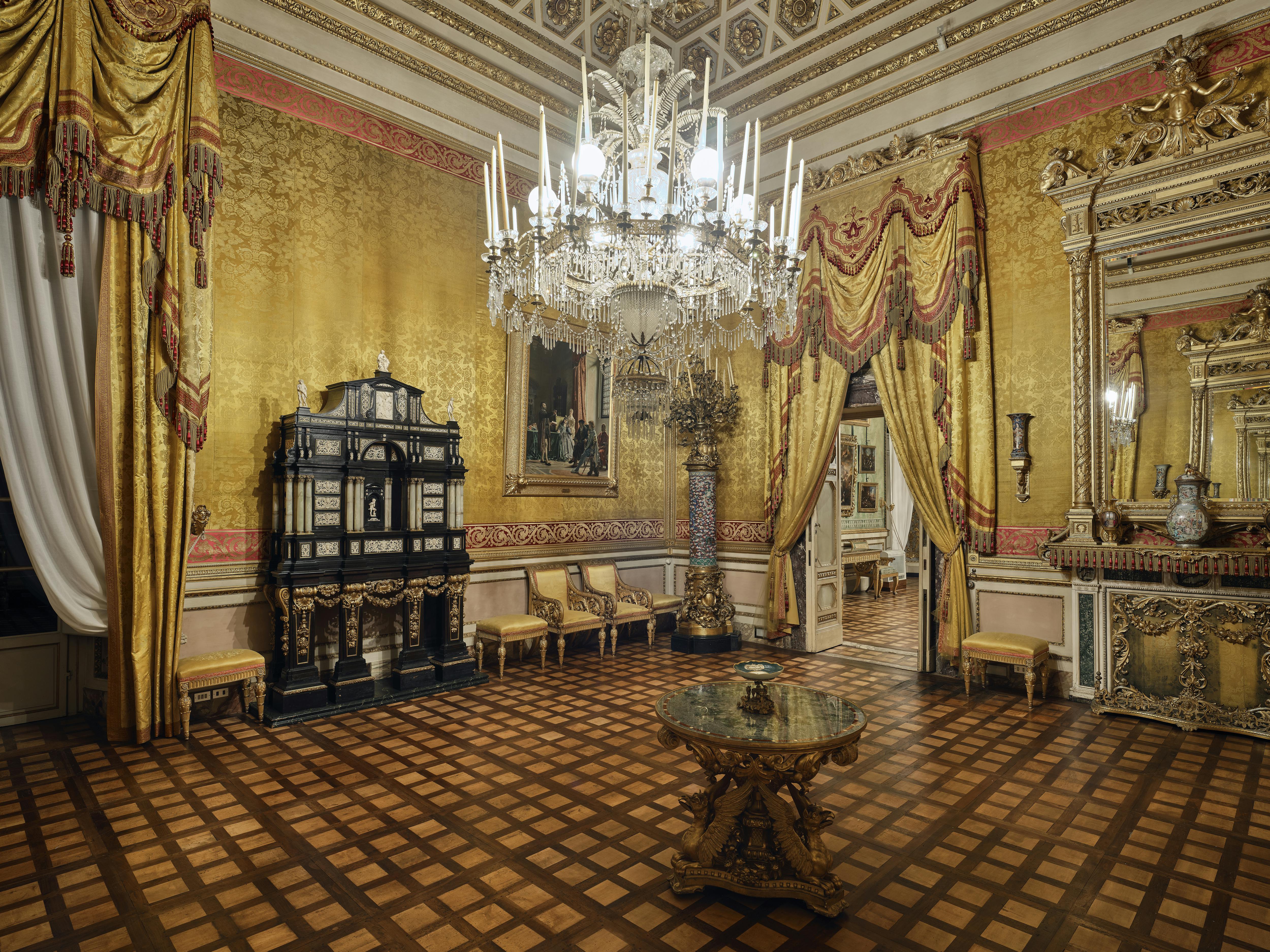Queen's salon
This is the first room in the Queen's apartments, also known as the Yellow Salon because of the colour of the wallpaper, which was originally white but was dyed yellow and adapted to the room in 1844. The silk was probably part of the group of tapestries that arrived at the palace with the return of Ferdinand III in 1814, at the time of the Restoration, and therefore dates to around 1810. The large carpet with the decorative motif of the sixteen imperial cohorts with the cross of the Legion of Honour at its centre, instituted in 1802 by Napoleon, dates to around the same period. This motif was taken from a carpet that the Emperor had made for the Grand Cabinet of the Château de Saint-Cloud.
Witness to the Medici era is the monumental ivory and ebony cabinet made by the Grand Ducal studios in 1704 under the direction of Giovanni Battista Foggini, where sculptures from the prestigious collection of Cardinal Leopoldo de' Medici are mounted.
The rest of the furnishings date, for the most part, to the Savoy era. The mirrors and consoles inserted in the room at the time of Queen Margherita date back to 1884. On the left side there are paintings bought in 1870 by will of Victor Emannuel II directly from the artists, solemn examples of that history painting which was a test of ability for the graduates of the Academy of Fine Arts. These are canvases depicting "Simon Memmi who on Petrarch's Commission Portrays Madonna Laura" and "The Signing of the Treaty of Bruzzolo" respectively by Pietro Saltini and Giuseppe Bellucci, the first in homage to the noble literary tradition of Florence and the second linked to the celebration of a crucial episode in the affirmation of the power of the Savoy family.
The oil painting of "Lady with Children and Nanny" and two other small canvases en pendant, depicting intimate or gallant episodes in 18th-century costumes, belong to an entirely different thematic strand and testify to the success in the 19th century of a genre with more frivolous and bourgeois accents.
Lastly, among the objects, the enormous candelabrum dating back to the middle of the same century stands out. Originally placed in the Throne Room, it was evidently appreciated for the exotic taste of the oriental porcelain mounted in bronze with neo-baroque pomp.
